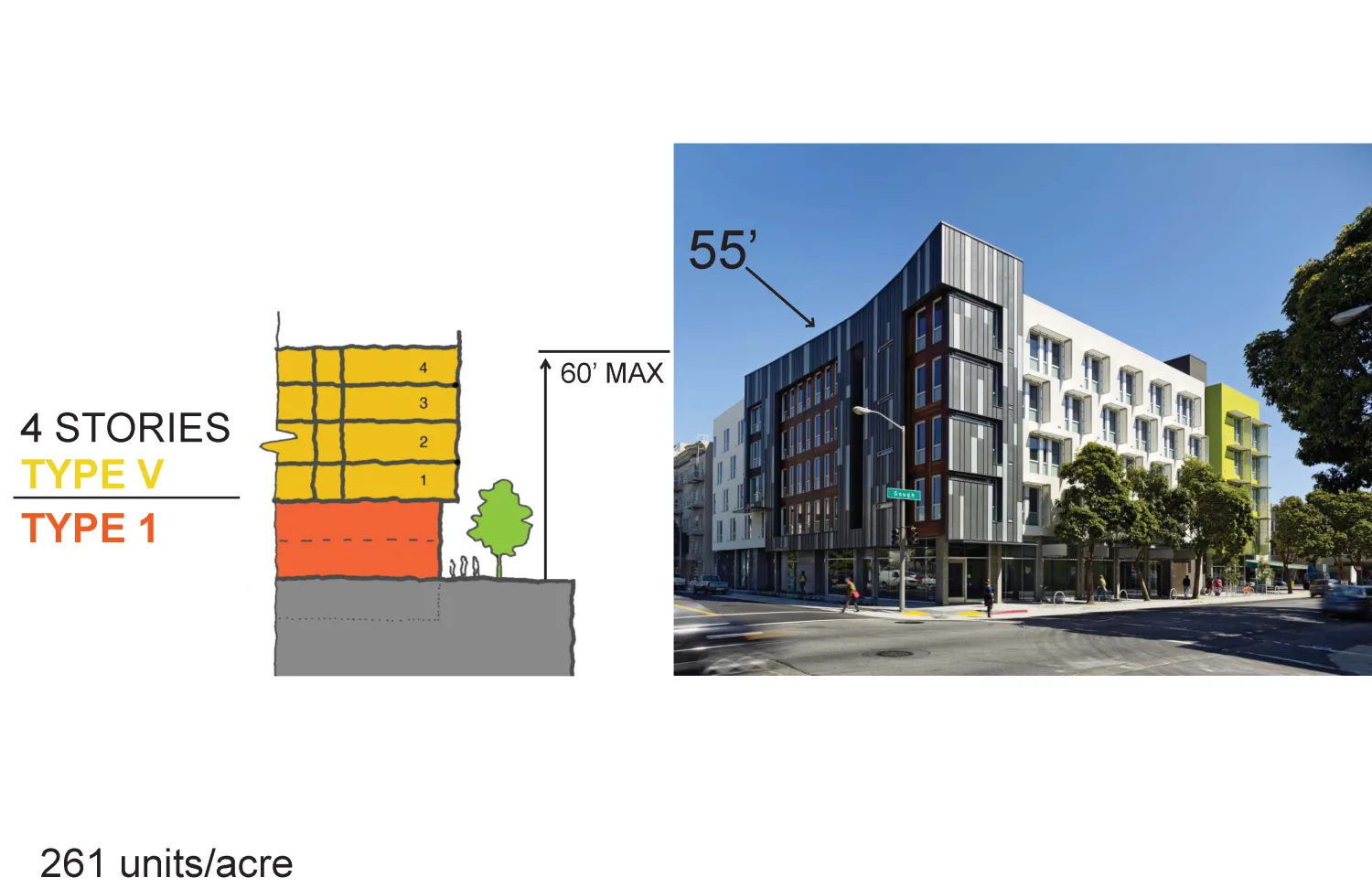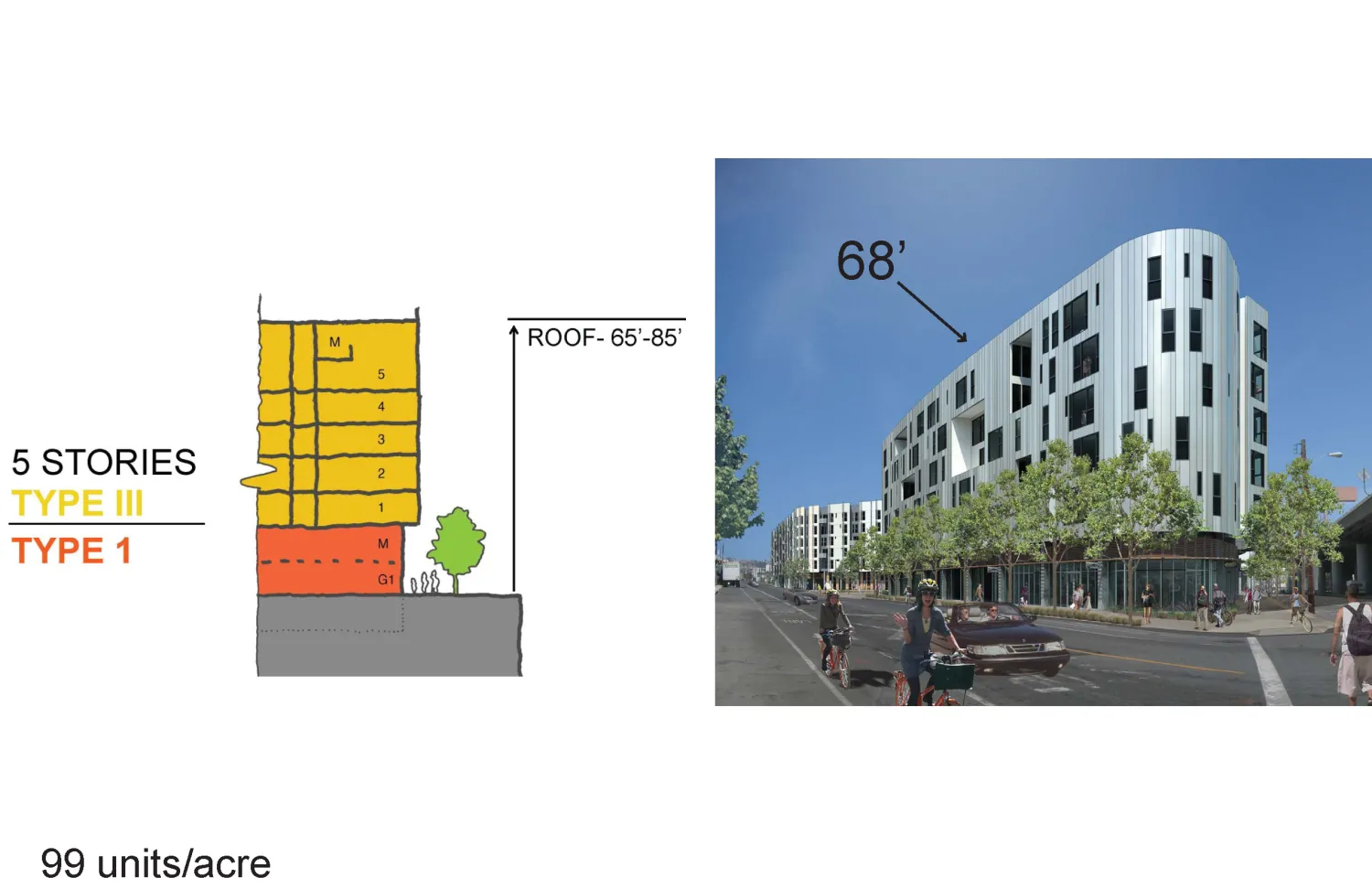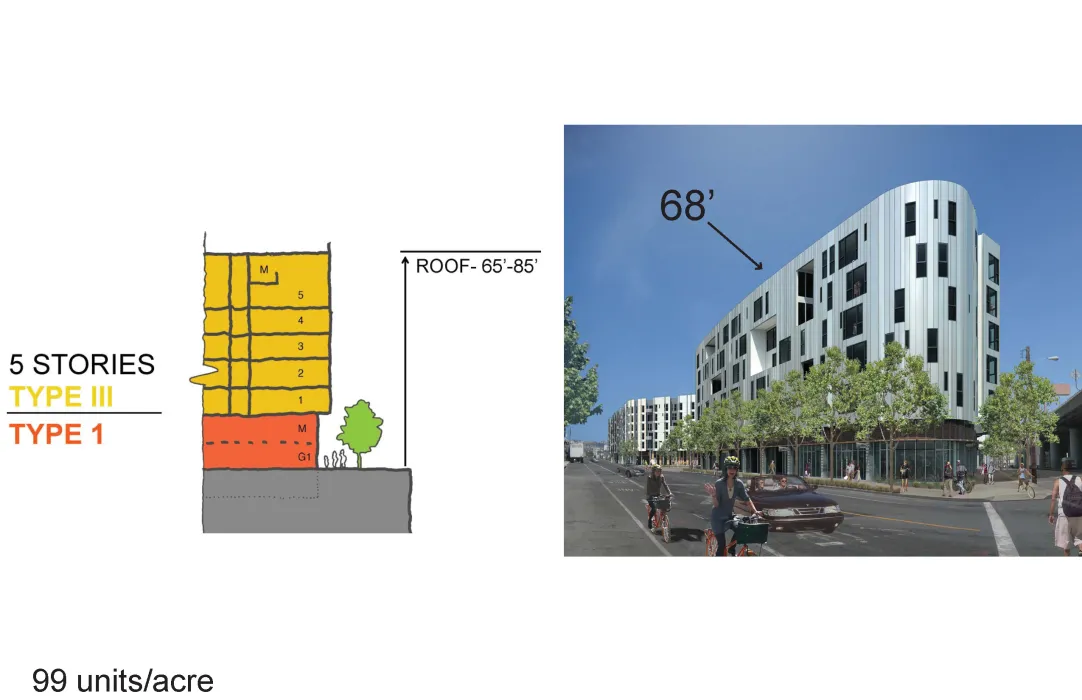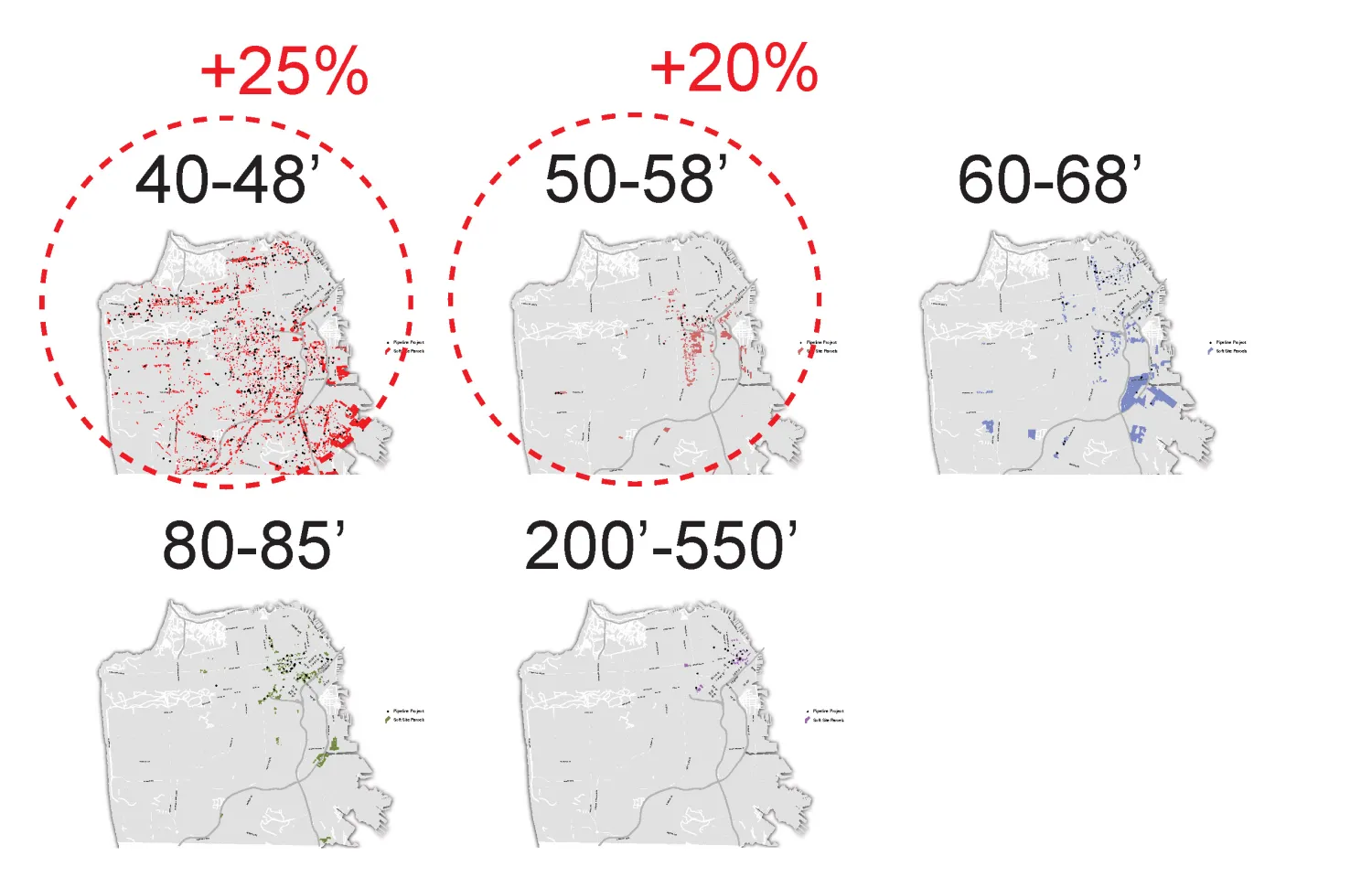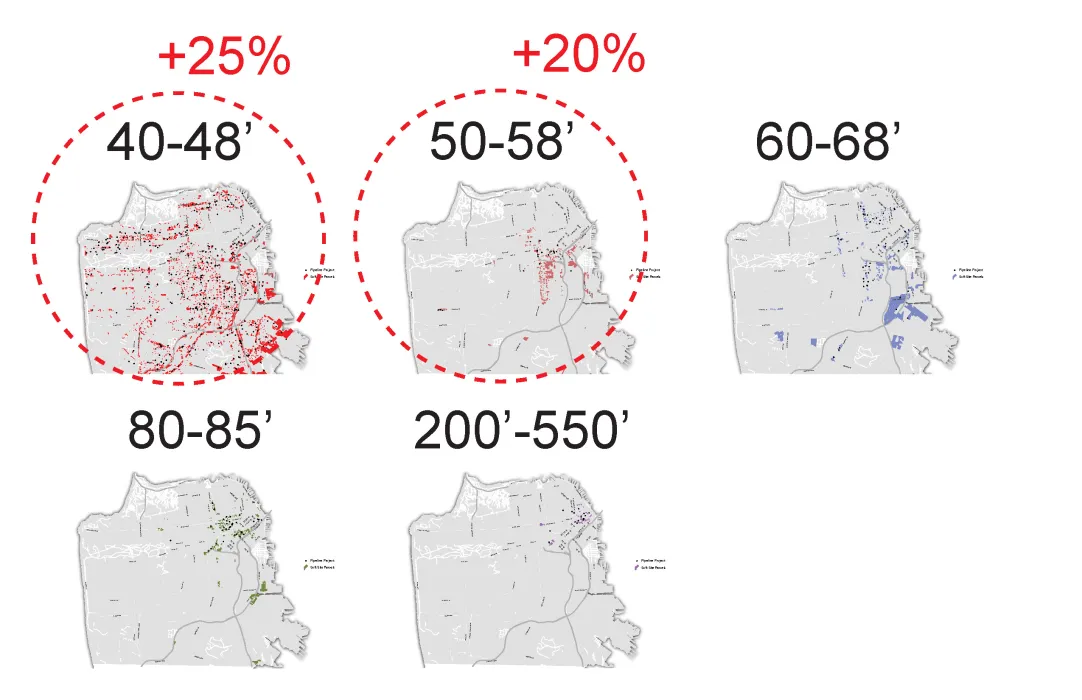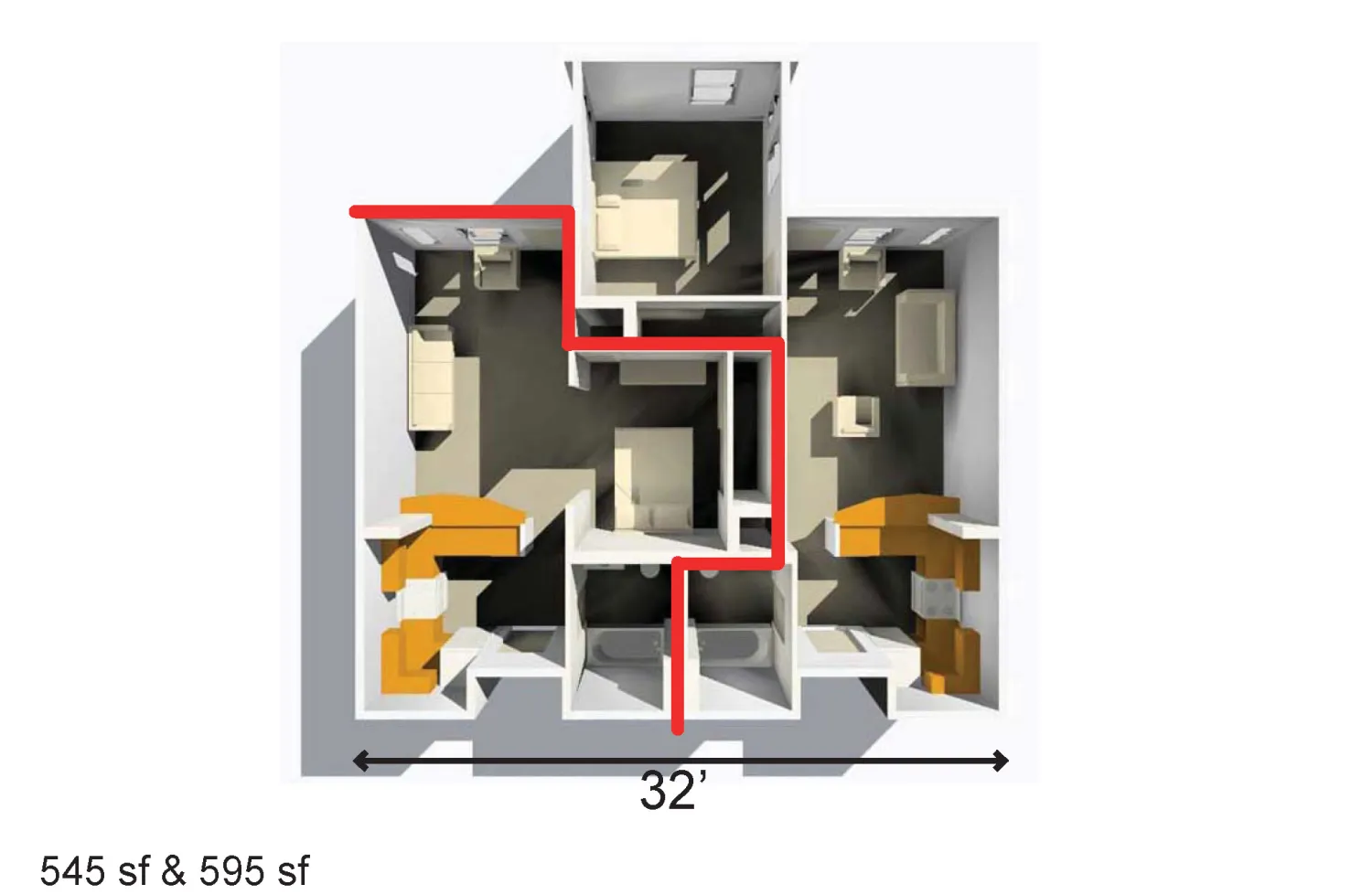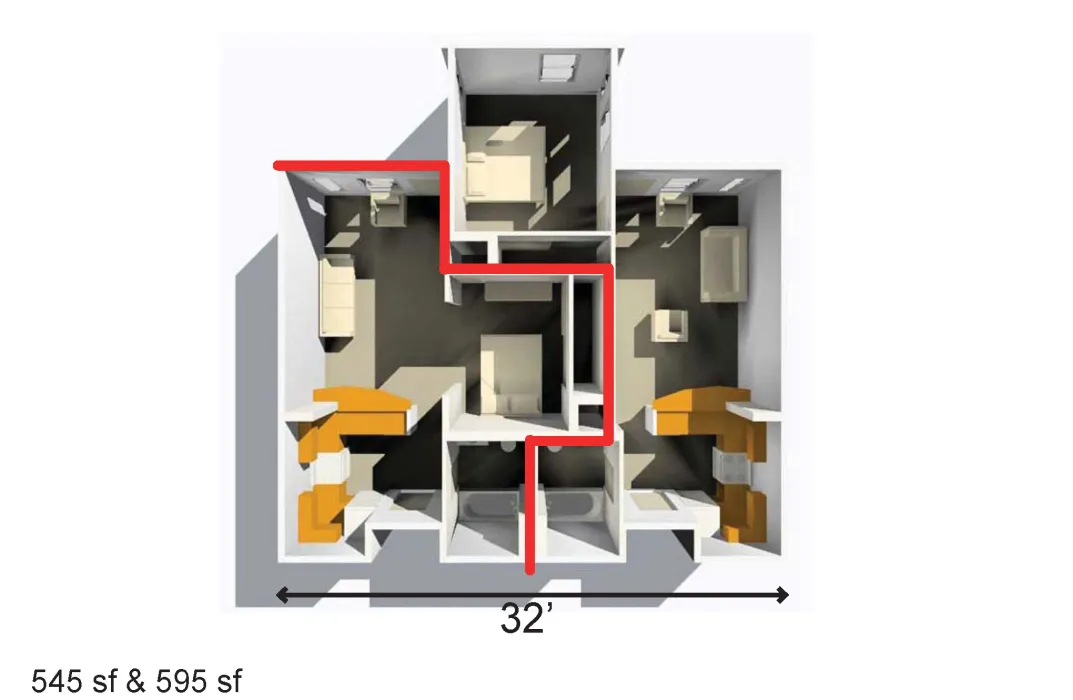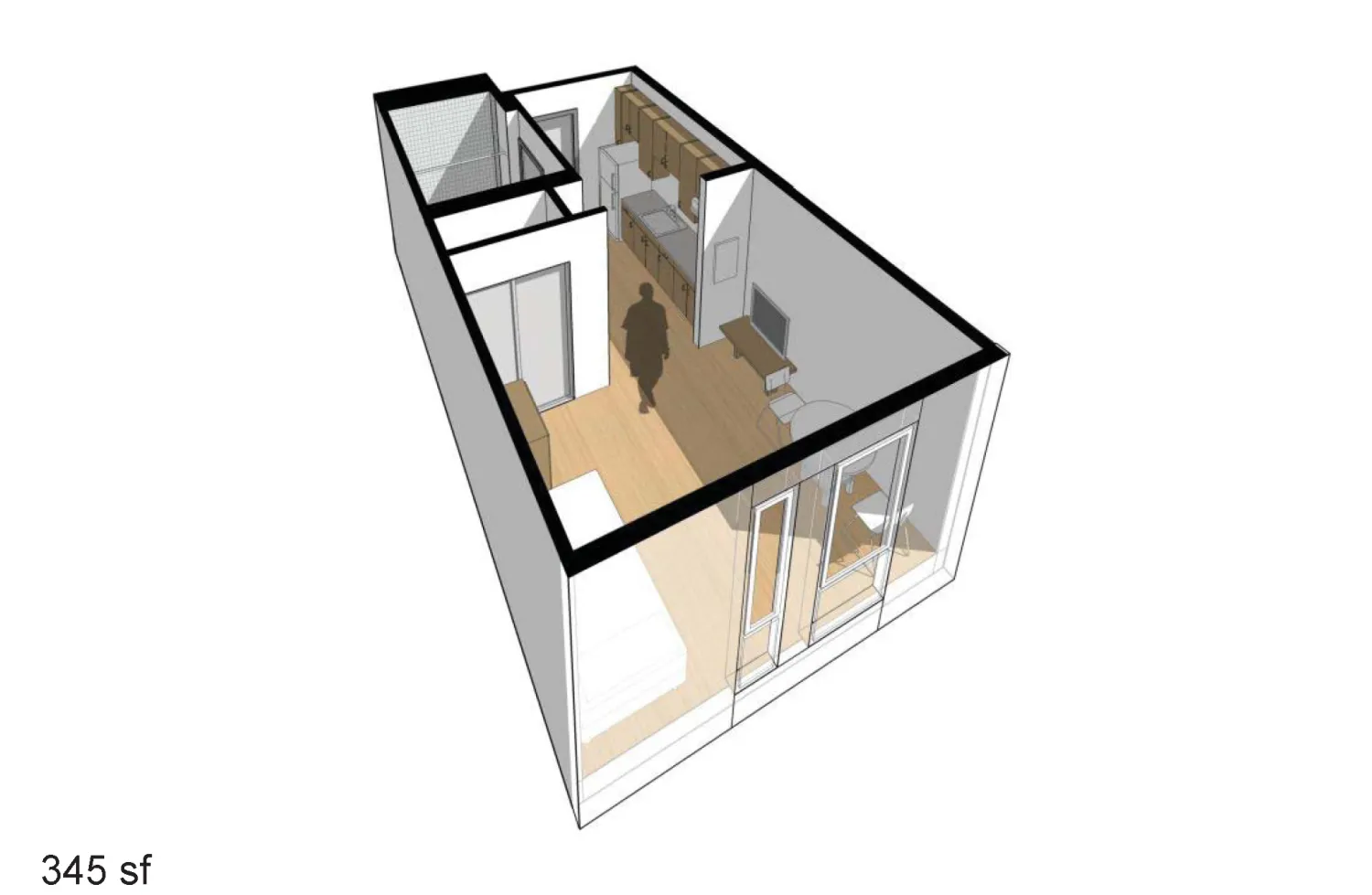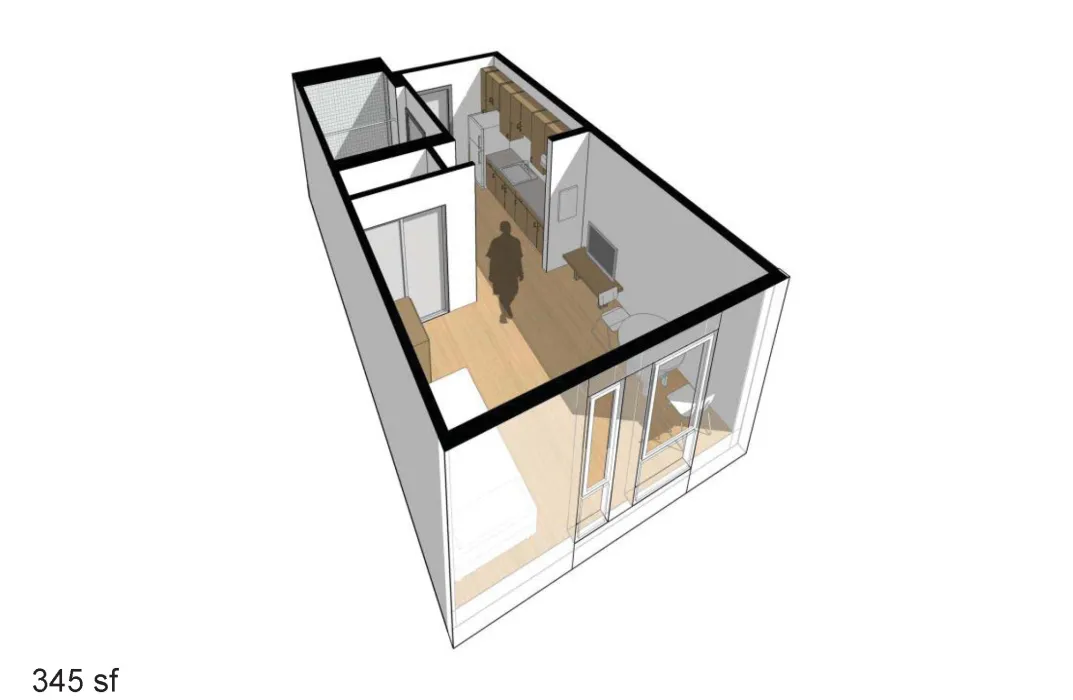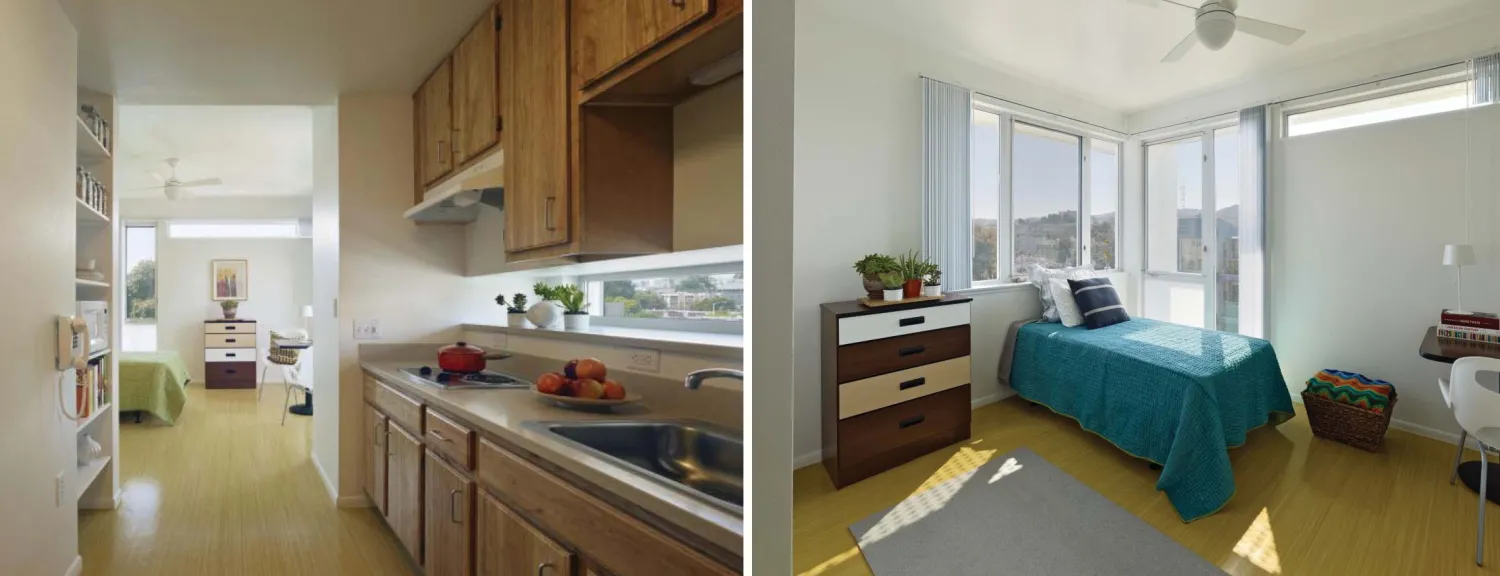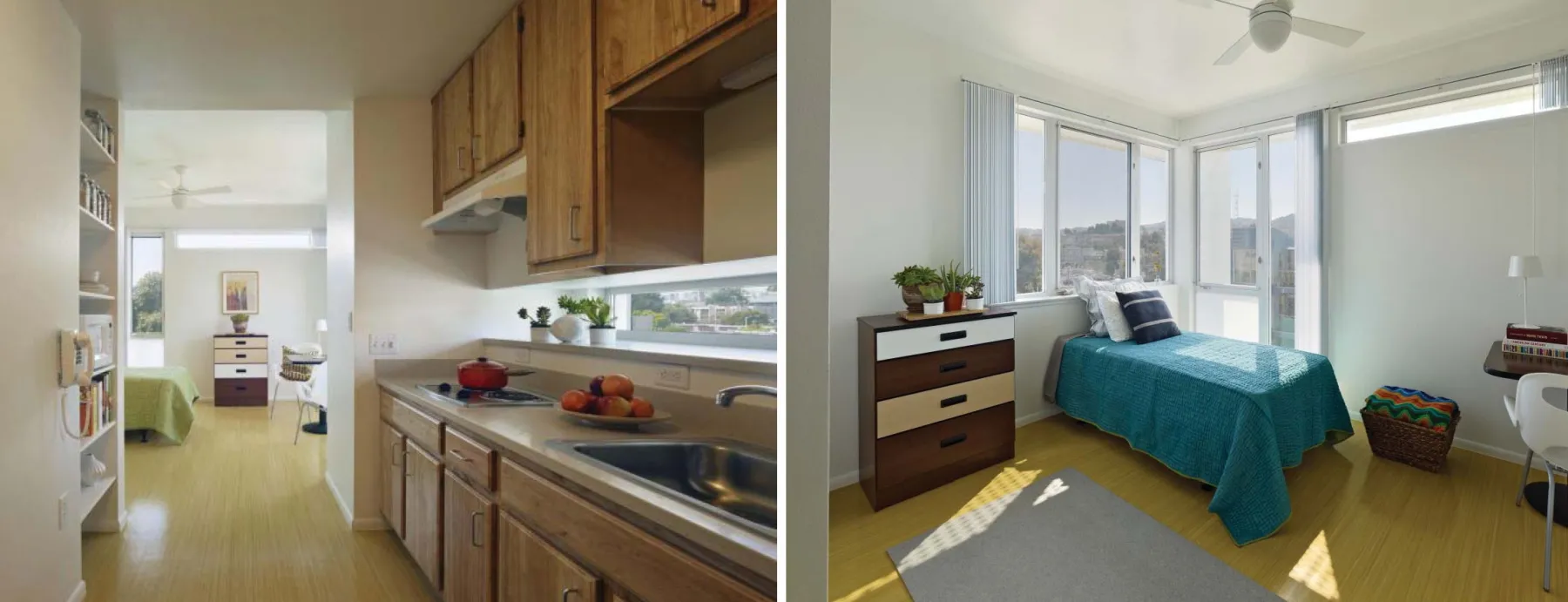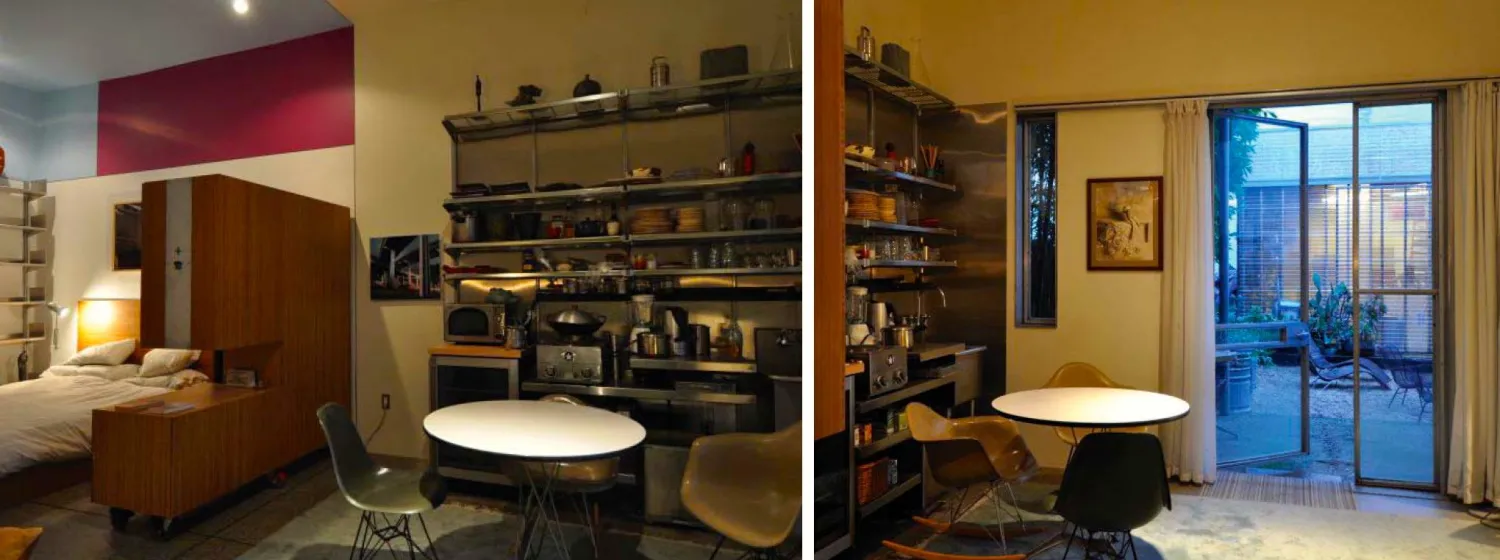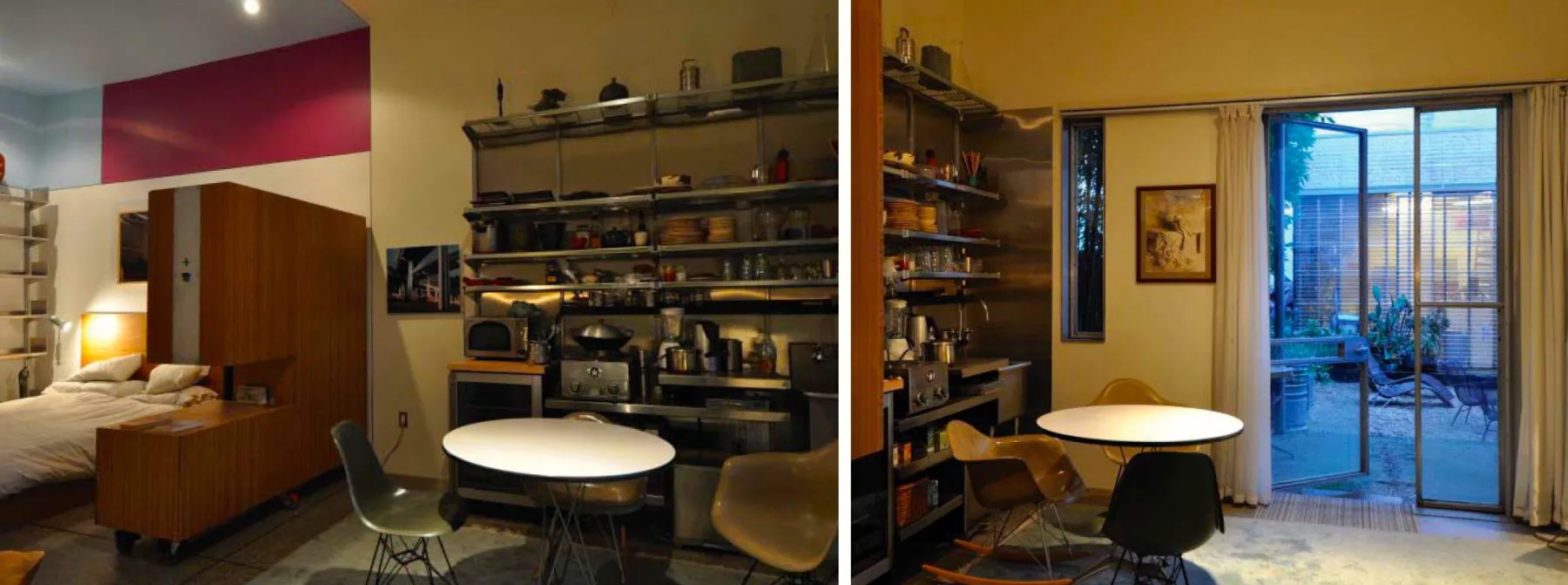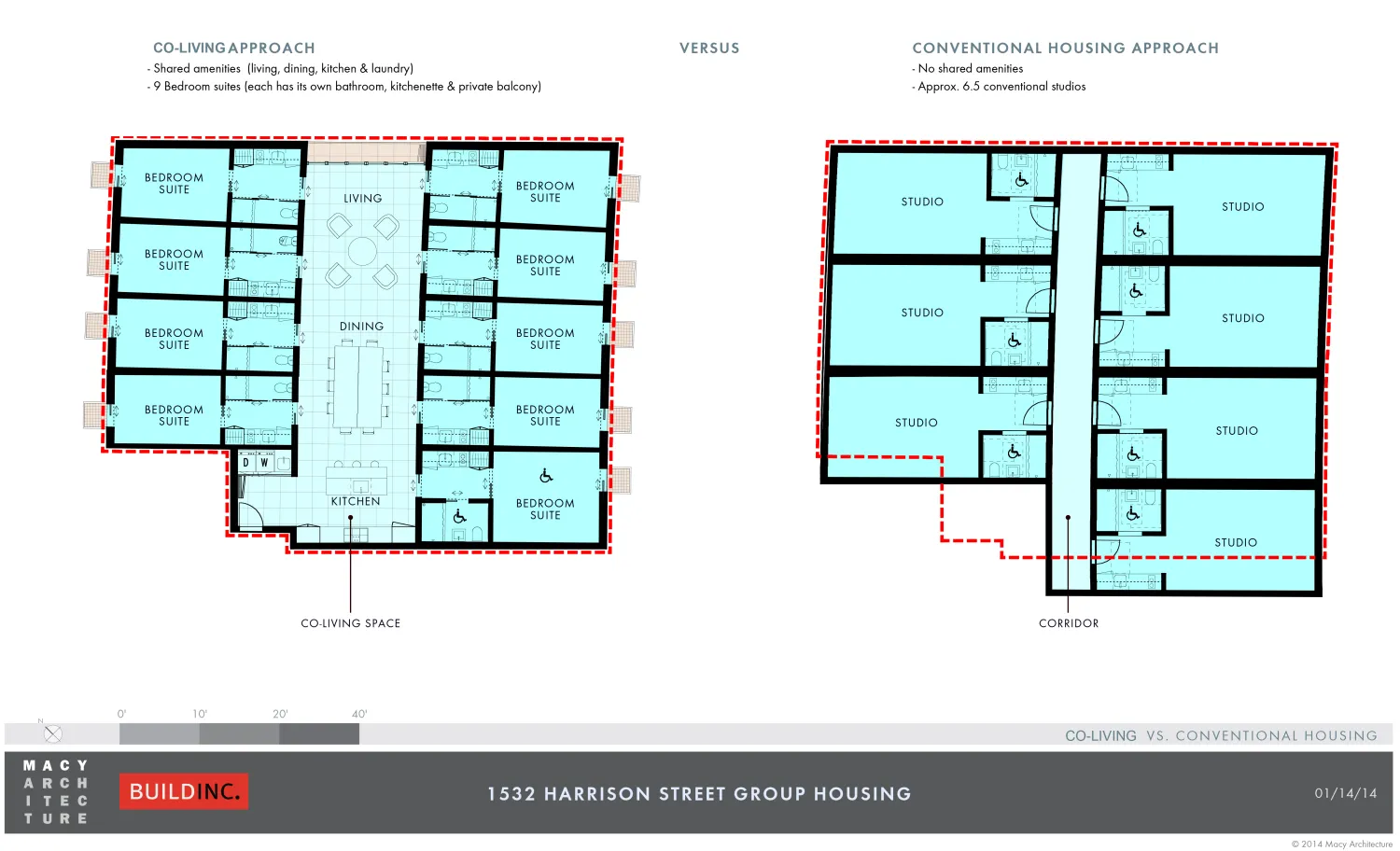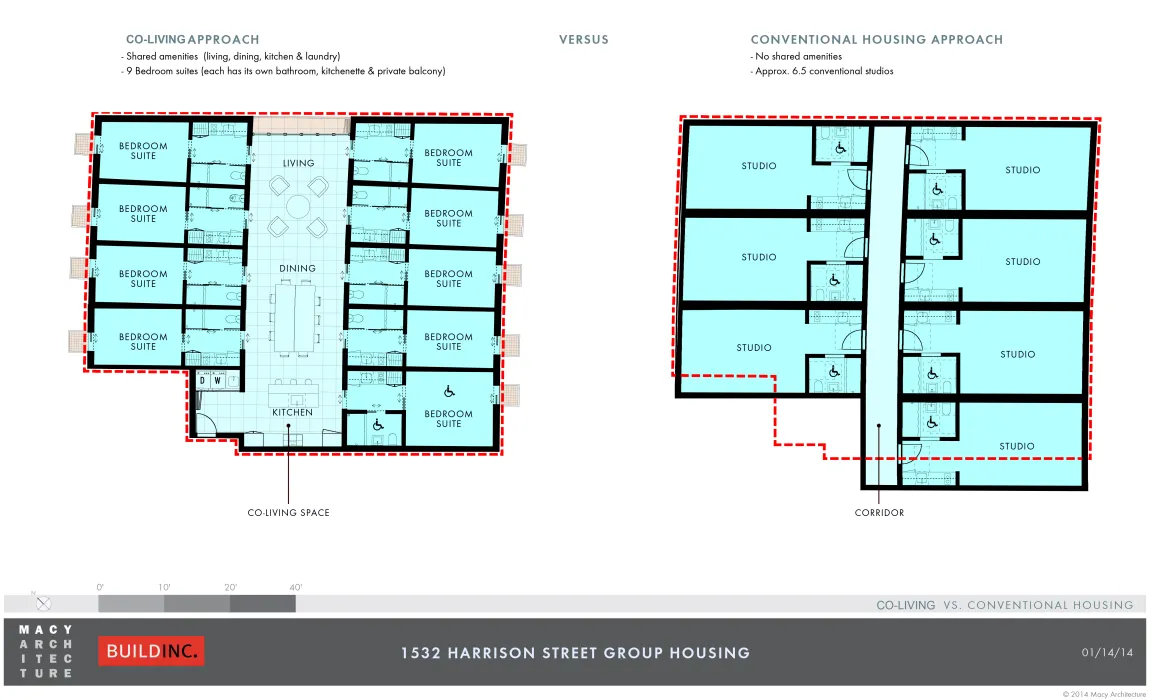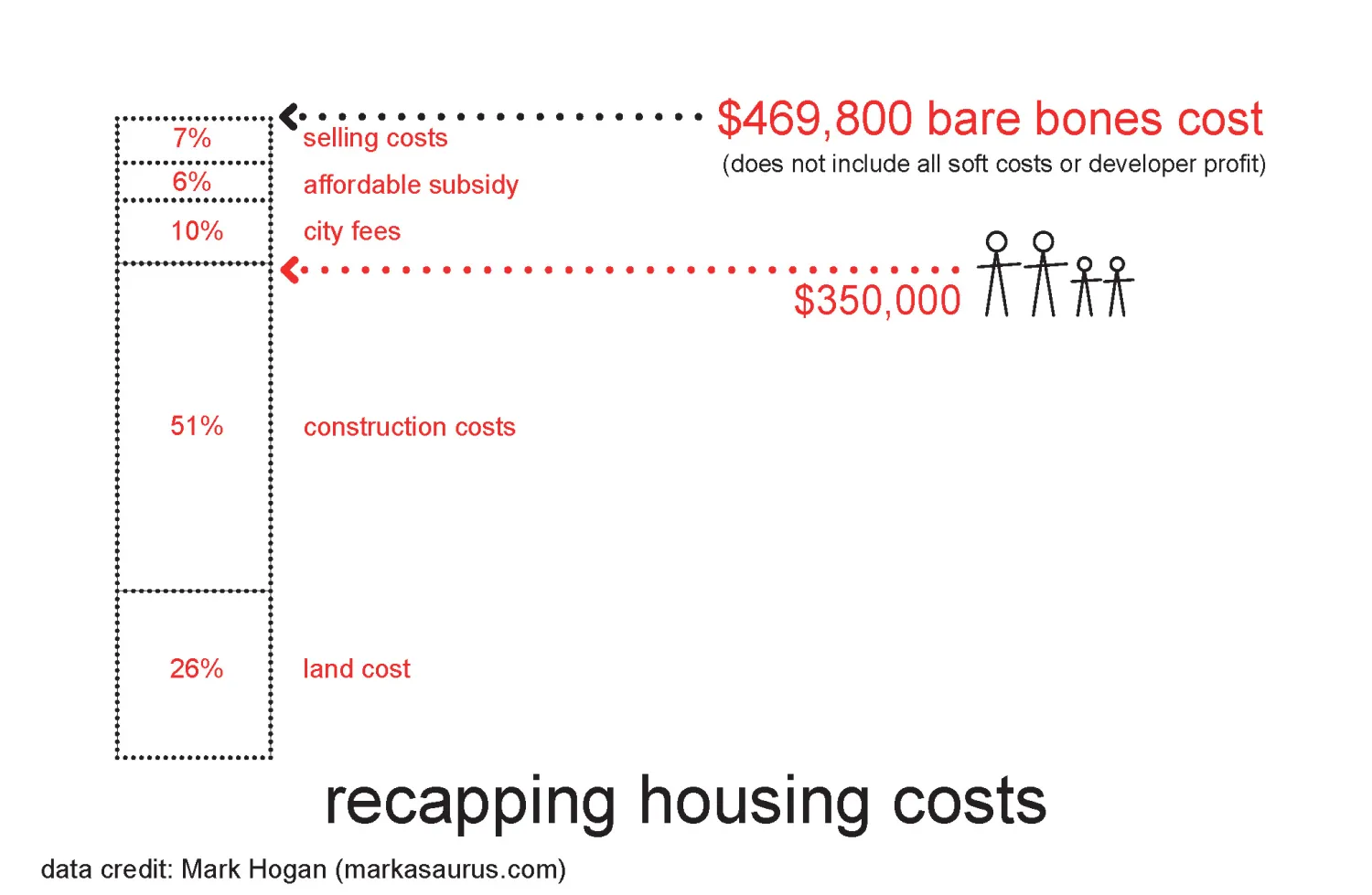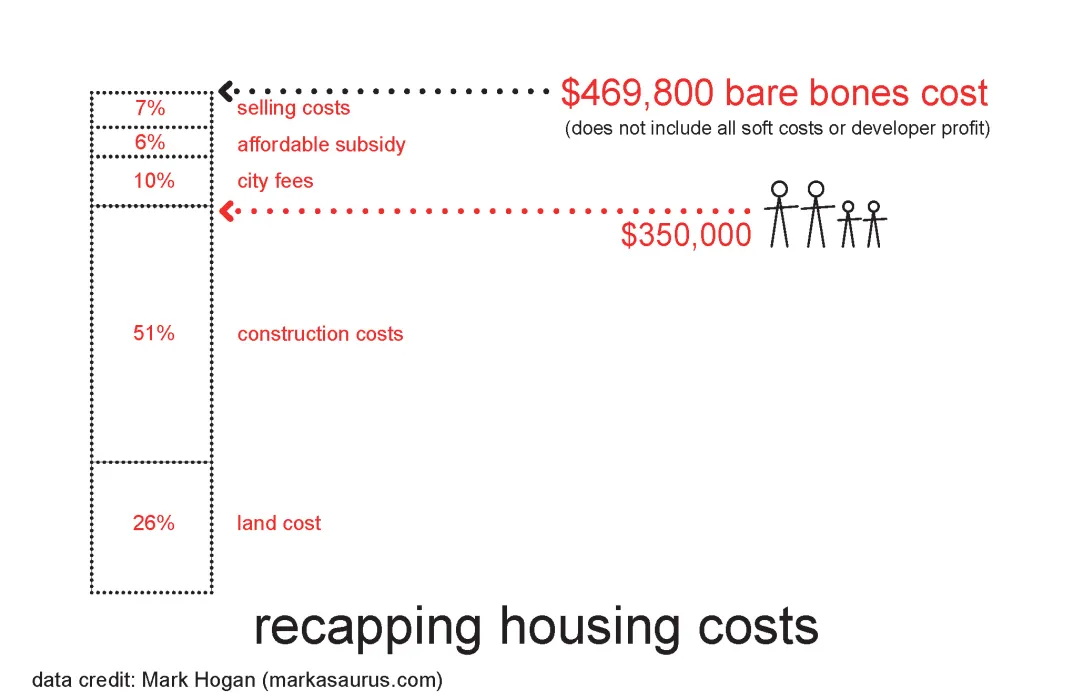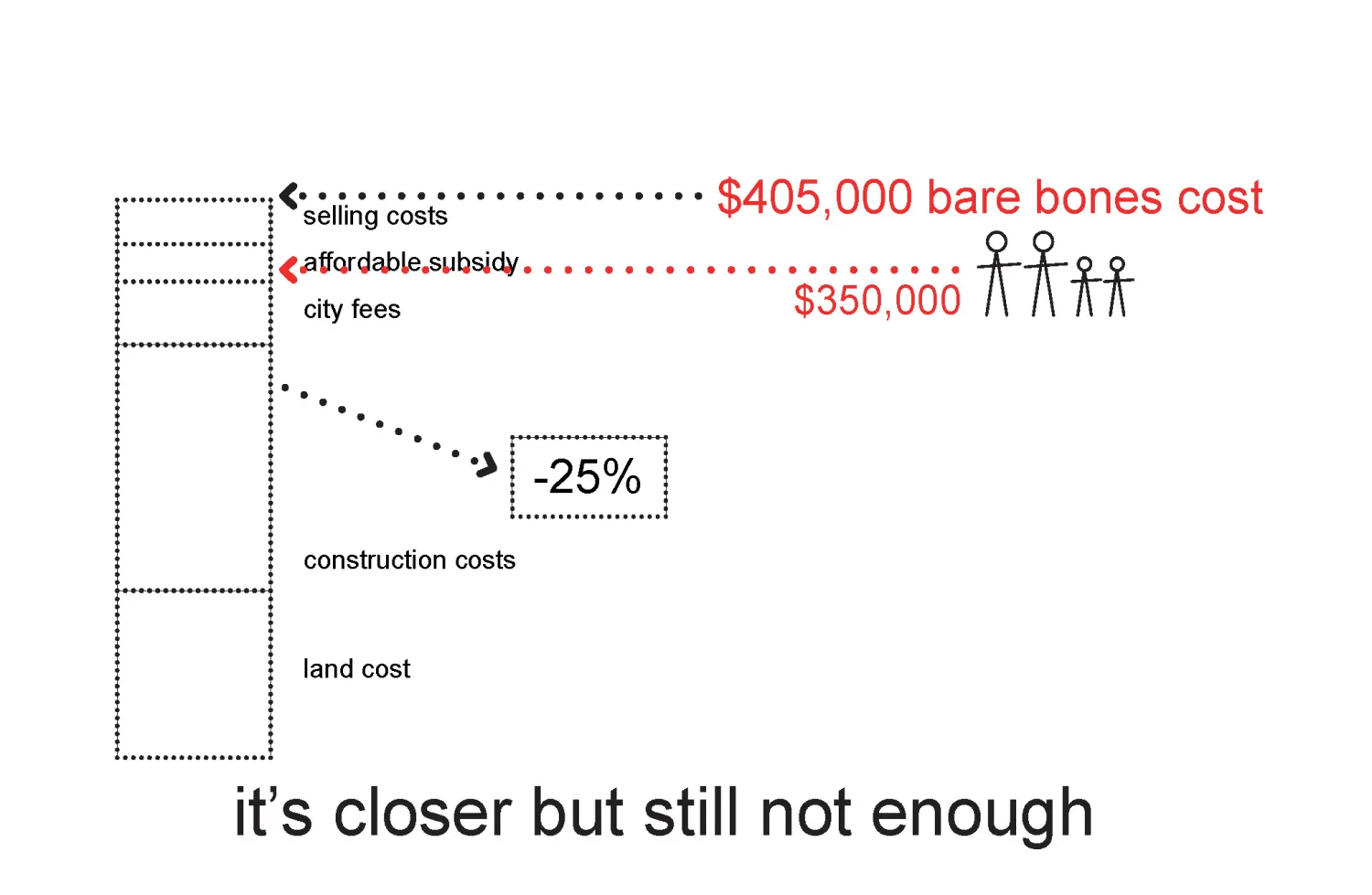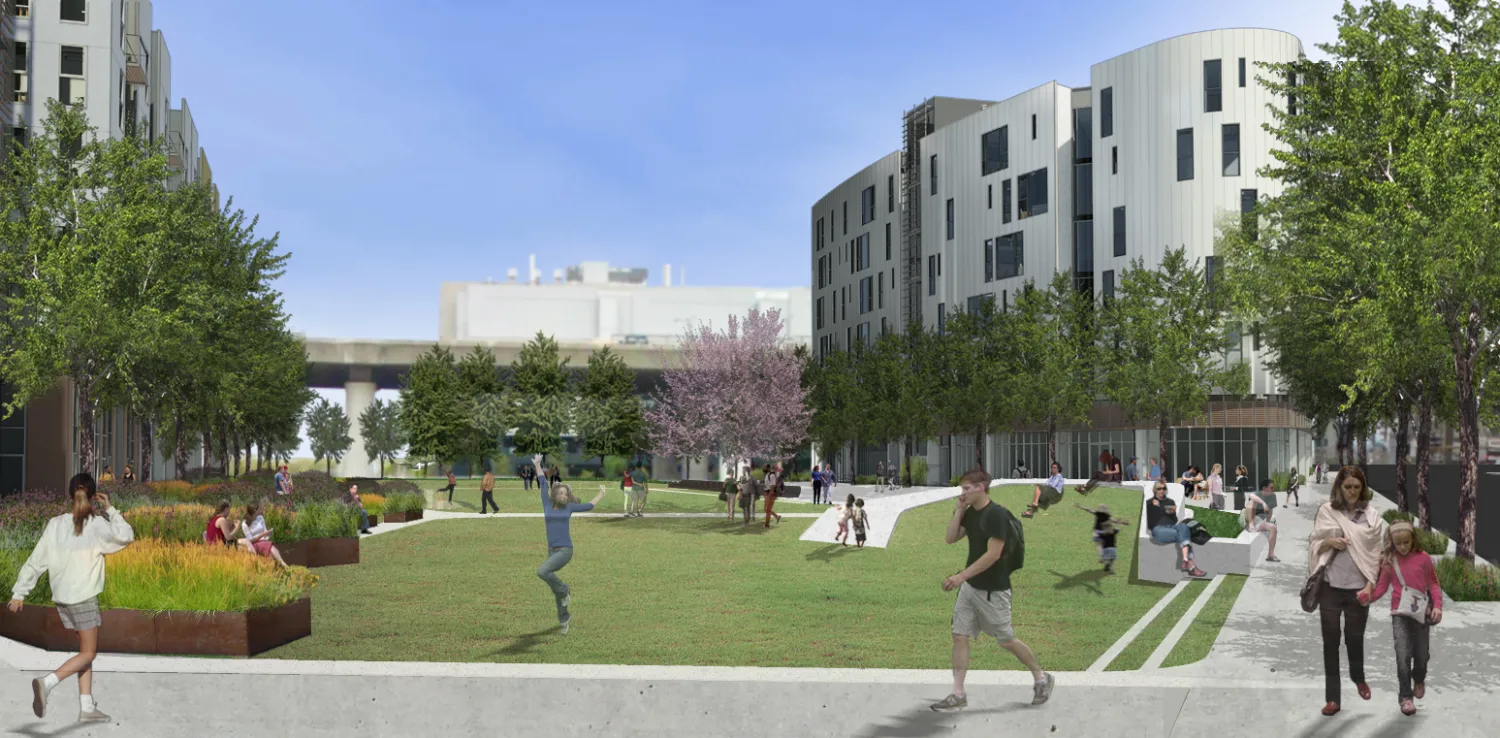
Dense development can also bring great common amenities, such as this 1-acre public park.
San Francisco is facing serious housing challenges, and the question of the day is "How can we decrease the cost of providing urban housing?"
This is a complicated challenge with a lot of moving parts, and innovative solutions will need to come from all players, including architects.
As part of a broad approach to moving urban housing production forward, DBA Senior Associate Amanda Loper proposes design strategies that can work to increase density and lower costs.
Architectural solutions can help decrease the cost of providing urban housing.
Subtle and complementary design strategies—from smaller units to taller buildings to creative configurations—can incrementally increase our much-needed density while also increasing quality of life for city residents.
Density doesn't have to be scary
The planning code and the building code should talk to one another and create a correlation between typical, cost-effective construction types and allowable building heights. Strategically adding just 10 feet to height limits on select existing developable parcels throughout the city could increase density by 25% with relatively little impact on neighborhoods. Adding 10 feet to 48-foot limits makes way for a building such as Richardson Apartments; adding 10 feet to 58-foot limits creates the opportunity for a building such as EQR Potrero (as illustrated here).
Small spaces can be great.
Small units can come in many packages and can also fit together like puzzle pieces to create wonderful places to live.
Let’s live together!
With more density and more amenity, shared spaces can pack a lot of bang for the buck. Co-housing allows for privacy and a sense of ownership while providing opportunities for more ample, diverse, and gracious common spaces.
For example, by creating bedroom suites each with a lean kitchen and bathroom, the co-housing design below fits 9 living spaces in the same footprint as 6.5 units and increases the quality and flexibility of the shared space.
So, what if we do come up with valuable cost-saving solutions?
There is presently a gap of at least $150,000 between the actual cost of bringing a unit to market and the price-point accessible to the average household in San Francisco. If we lower development and construction costs, how will that actually translate into costs to the consumer?
It takes a village (to build a city)
There is no magic bullet. It will take changes across all aspects of housing design, development, construction, and policy. Flexibility, innovative solutions and incremental change are crucial to addressing our urban housing challenges. And of course, a dose of radical optimism will help.
Amanda Loper AIA LEED AP joined DBA in 2006 and became a Senior Associate in 2013. She holds degrees in architecture and interior architecture from Auburn University and is an alumna of the Rural Studio. Her current projects include two market-rate developments that comprise several city blocks in San Francisco. Amanda specializes in rapid architectural prototyping and works to bring social awareness to issues of housing and density within the urban setting.
This presentation was part of a SPUR Forum series exploring the cost of housing. Contact Amanda at amandaloper@dbarchitect.com.
